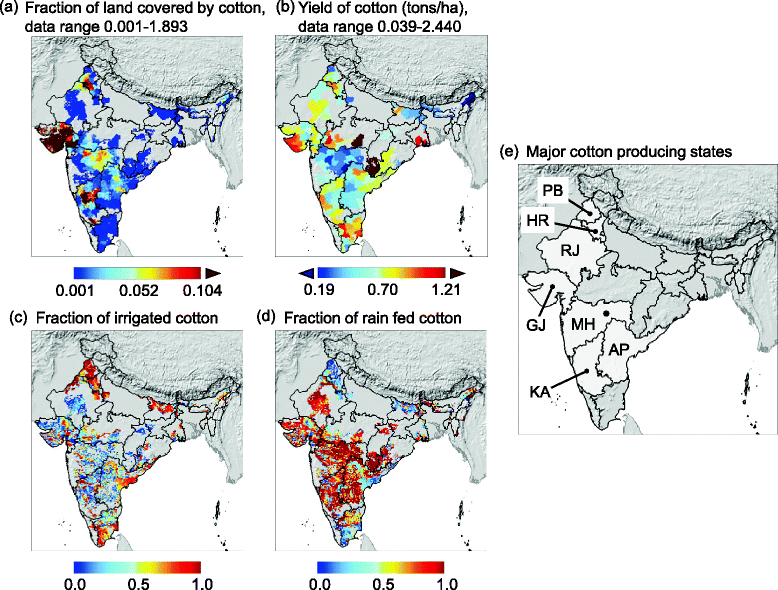
Distribution of cotton across India
Cotton production in India: a the proportion of land planted to cotton, b lint cotton yield (tons/ha), and c the fraction of irrigated and d rainfed cotton as a fraction of the 10 × 10 km cell raster data, and e the major cotton producing states. Black dot symbol in Fig. 1e indicates the location of Yavatmal, MH.
Source: SpringerOpen: “Deconstructing Indian cotton: weather, yields, and suicides” Andrew Paul Gutierrez - Luigi Ponti, Hans R Herren, Johann Baumgärtner, Peter E Kenmore https://enveurope.springeropen.com/articles/10.1186/s12302-015-0043-8#Sec3. Extract from “Environmental Sciences Europe. Bridging Science and Regulation at the Regional and European Level” https://doi.org/10.1186/s12302-015-0043-8 © Gutierrez et al. 2015
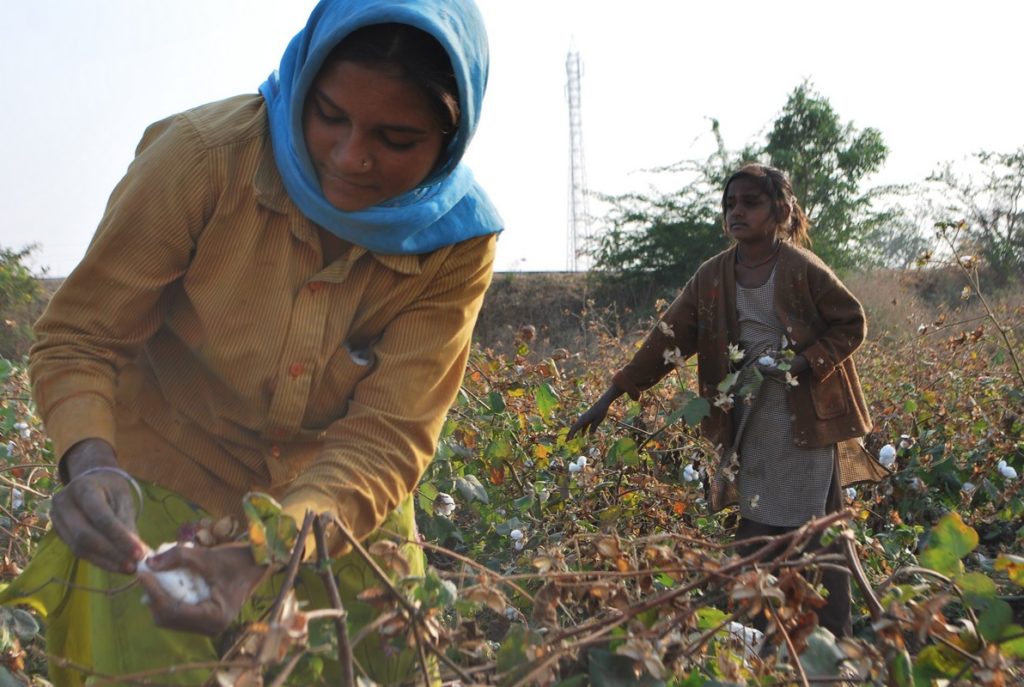
Bt cotton plantation in Gujarat. ©Manlio Masucci
The current agricultural model has been in large part imposed in India. First with the Green Revolution, followed by the establishment a seed monopoly by Monsanto, which has essentially bought all the small seed companies nationwide, wiping-out the circulation of traditional local seeds from the market. Over 5 million farmers are engaged in cotton production and over 70% of cotton workers are women. The livelihoods of 50 million people depend on cotton related activities. More than 95% of India’s agricultural land is currently under BT cotton Hybrids. The adoption of Monsanto's BT cotton by farmers has been strongly promoted with false promises of making farmers rich, but none of the promises made have been fulfilled, both because of the indiscriminate increase in prices and because of the failure of the BT technology.
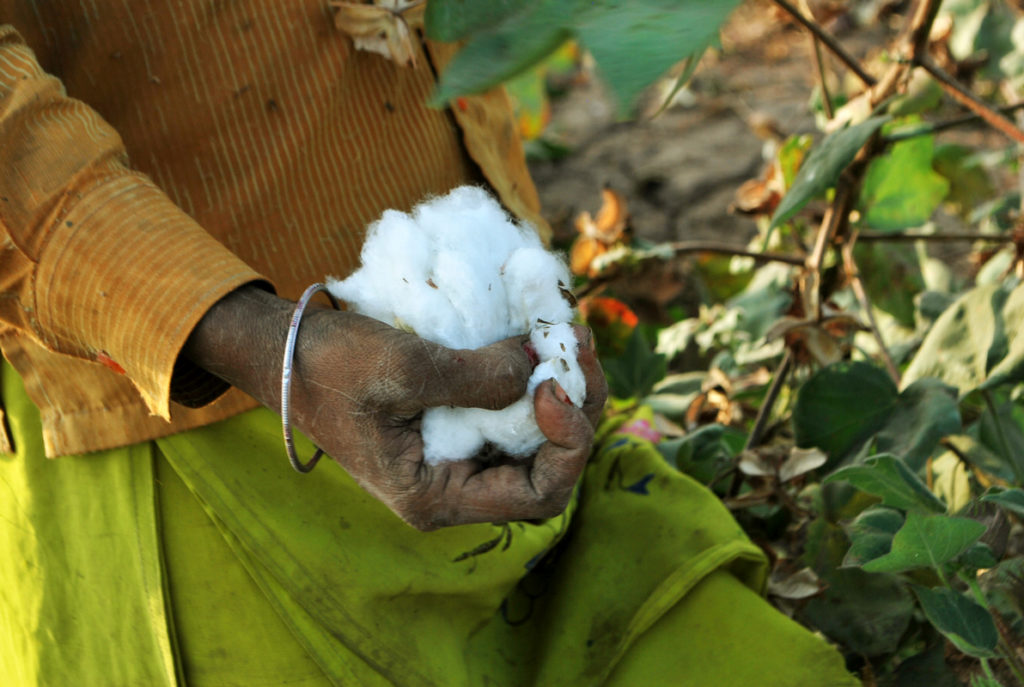
Bt cotton plantation in Gujarat. ©Manlio Masucci
Farmers are being trapped in debt and being driven to suicide because seed is too costly and unreliable. Child labor is widespread in Indian cotton fields. It is estimated that 60 per cent of workers are adult females, 20 per cent adult males and the remaining 20 per cent are children. Studies show that nearly 60 per cent of the beneficial soil organisms have been killed by the Bt toxin in the cotton fields of Vidarbha, in the western state of Maharashtra. There are no pollinators on Bt cotton plants, and the honey industry in Bt cotton areas has collapsed. Even at the trial stage it was clear that Bt cotton did not work as a pest-control technology. New pests are being created and the bollworm has evolved resistance.
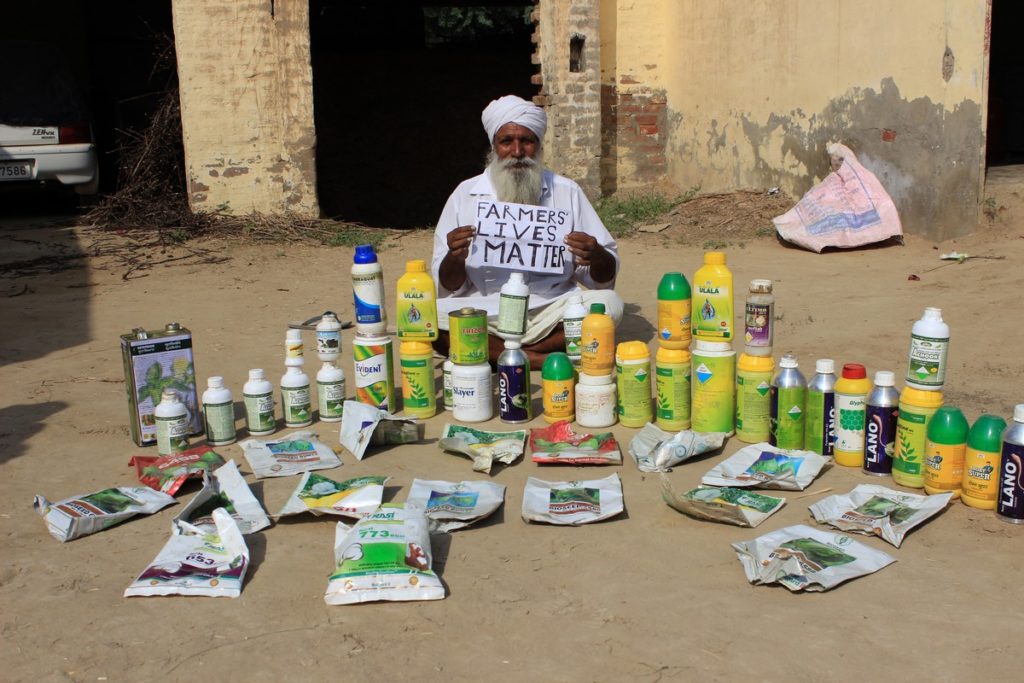
Chemical Pesticides used by farmers in Bt Cotton fields in Punjab. ©Shaani Singh
The primary justification for the genetic engineering of Bt toxin into crops is that this will reduce the use of insecticides. One of the Monsanto brochures had a picture of a few worms with the statement: “You will see these in your cotton and that’s okay. Don’t spray”. However, new pests have emerged, the pink bollworm has evolved resistance and farmers are using more pesticides than ever. The company misled the farmers and the government failed to apply regulate the company. Both the government’s failure to regulate GMOs and the court’s failure to have regulations implemented honestly and scientifically have cost hundreds of thousands of farmers suicides (most of the 300,000 suicides are in the cotton belt which is now a GMO cotton belt).

Farmers protest: rail-block of the arterial railway tracks around Bathinda. ©Shaani Singh
Bt cotton has been genetically modified by the insertion of genes from Bacillus thuringiensis for the production of insecticidal proteins, targeting mainly caterpillar pests, but also some beetles and flies. Bt technology ideally aims at reducing pesticides use, but pests are developing resistance and farmers are losing their crops and are forced to use chemical inputs. For example, in October 2015 the Malwa cotton belt region of Punjab sunk deep into an agrarian crisis as 1.2 million acres of cotton crop was ruined by a pest infestation.
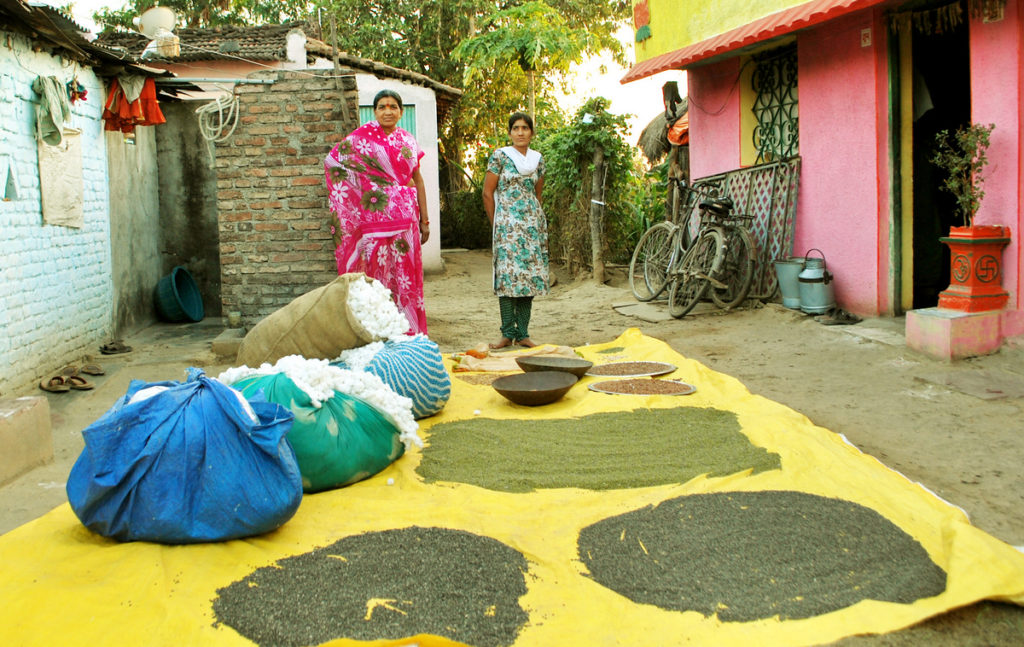
Navdanya's organic farm, Vidharba, Maharashtra. ©Manlio Masucci
Despite 13-15 rounds of spraying pesticides, Bt cotton was still devoured by the whitefly. Reports show that “almost all” of the crop destroyed was of the Bt cotton variety. Nonetheless organic cotton growers successfully reported they were able to ward off the infestation and produced an average of 4-7 quintals per acre.
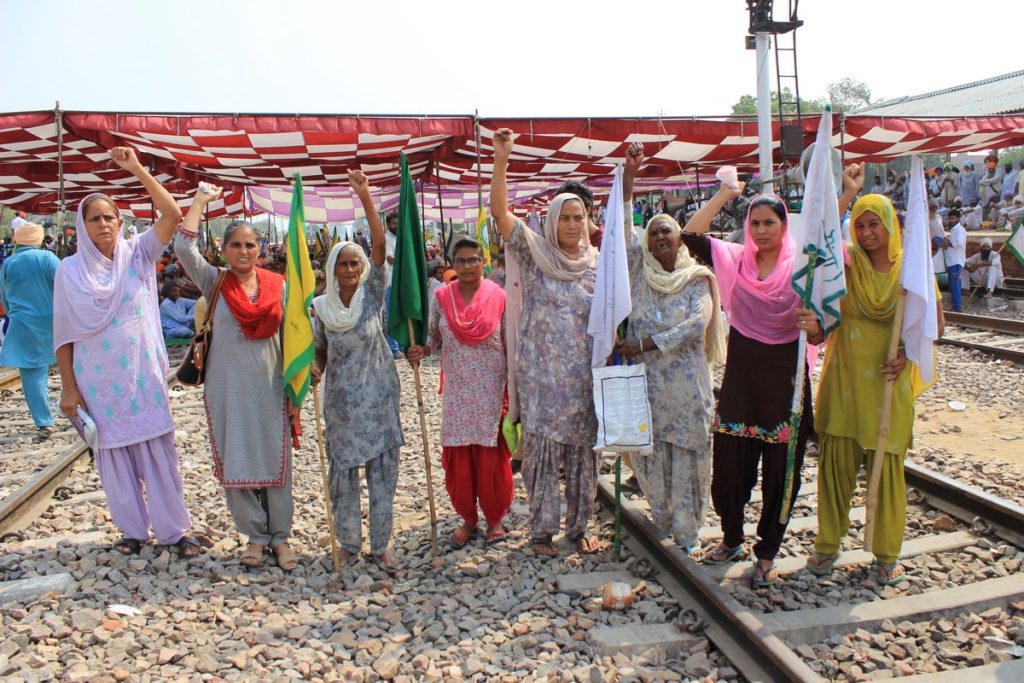
Women farmers demonstrate at rail-block protest in Bathinda, Punjab. ©Shaani Singh
After the first wave of pest infestation in early October 2015, media sources reported 15 additional farmers had committed suicide as two thirds of the cotton crop failed. Peaceful protesting farmers in an act of non-cooperation demanded a fair compensation of Rs 40,000 per acre for each farmer and Rs 20,000 for each labourers’ family. When this was denied, hundreds of Bt cotton farmers, women and men, organised themselves and blockaded the major railway lines around Bathinda as well as in Pathrala, Mansa, Rampura, Shergerh, etc. The peaceful protest continued for several days, despite the state government’s insistent harassment and growing pressure including the disruption of their food supplies.
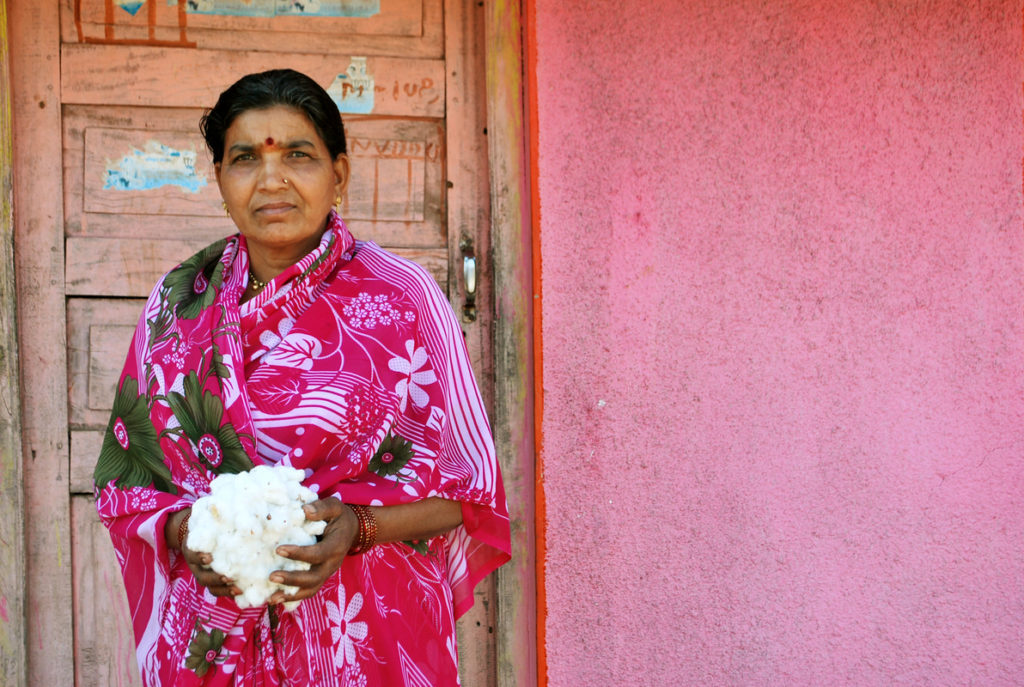
Navdanya's organic farm, Vidharba, Maharashtra. ©Manlio Masucci
Navdanya spearheaded the movement in defense of cotton farmers’ rights as it became evident that the monopoly established by Monsanto in cotton farming was severely affecting their very survival. Actions included field trips aimed at investigating the damage, as well as raising awareness on the risks of Bt cotton farming and on the corporate profit driven agenda behind it. Navdanya’s seed banks and farmers’ training programs, focused on conservation of indigenous seed varieties and organic farming, include special projects on indigenous cotton seeds and farming.
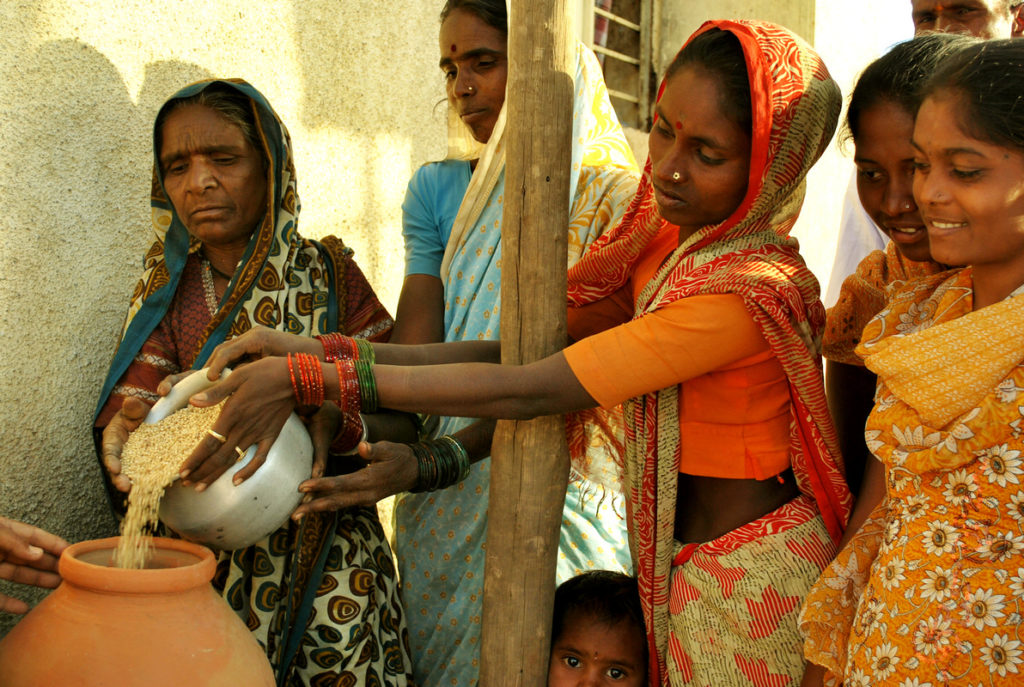
Navdanya's program for seed saving in Vidharba, Maharashtra. ©Manlio Masucci
In the more than 120 Seed Banks set up by Navdanya across 22 states in India in the last 30 years, communities store, conserve and distribute cotton, corn and vegetables native seeds to farmers who request them, while Navdanya provides training in organic cultivation. More than 6000 farmers have been distributed indigenous seeds.
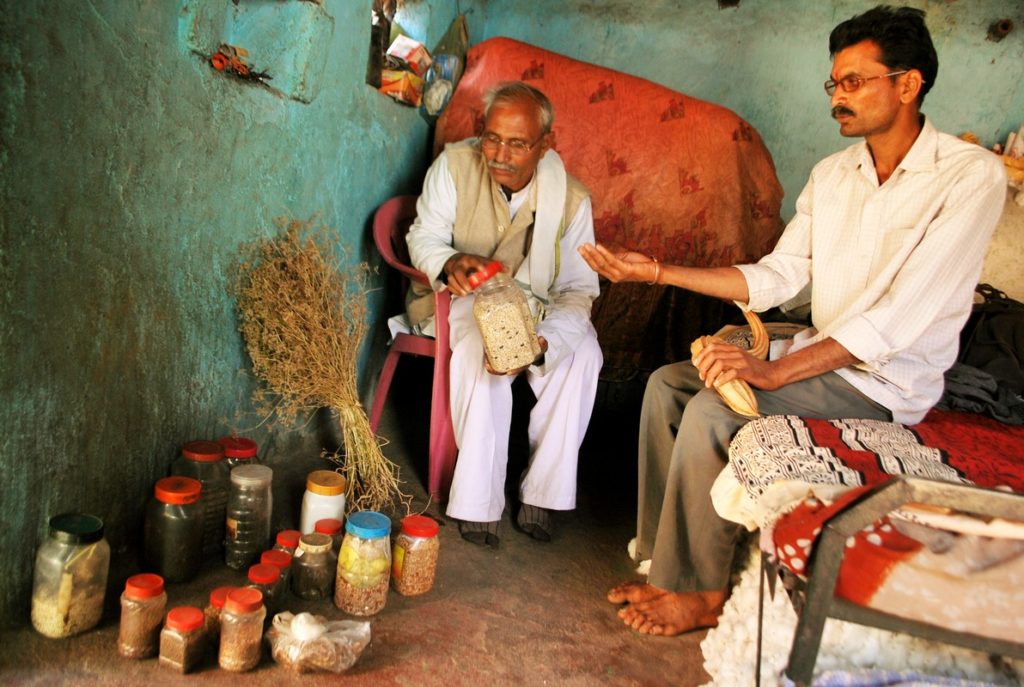
Navdanya's program for seed saving in Vidharba, Maharashtra. ©Manlio Masucci
Responding to the deepening crisis, in 2007 Navdanya started the Seeds of Hope Program, which provides immediate support directly to indebted farmers and especially the widows of farmers who have committed suicide, to give them an economically and ecologically viable and sustainable alternative, and which also addresses the root cause of the crisis.
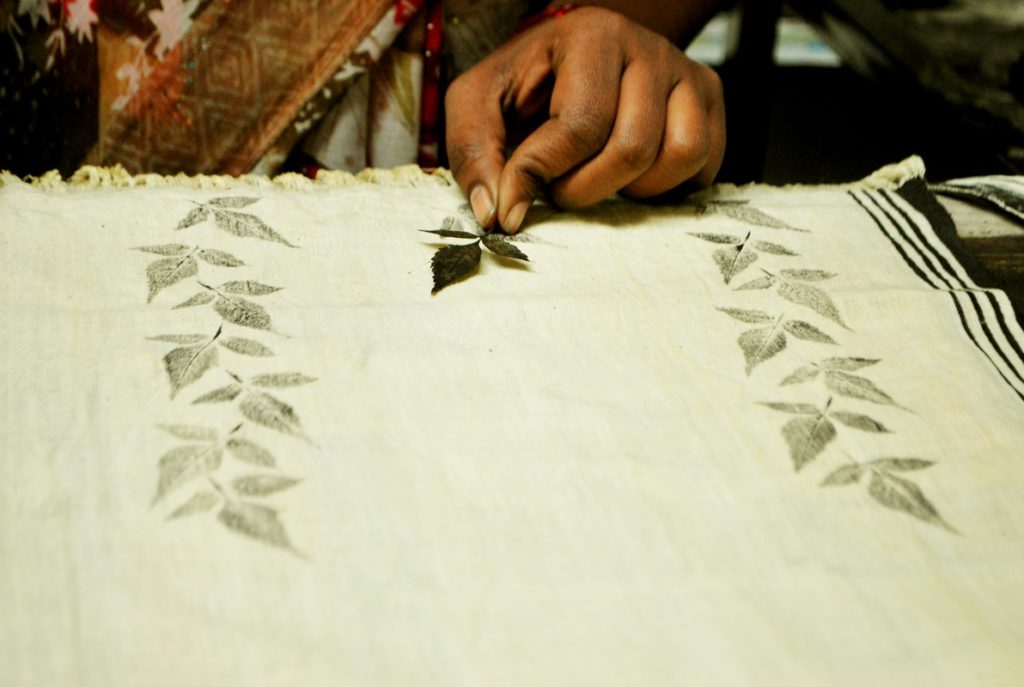
Artisanal printing with vegetable dyes in Vidharba, Maharashtra. ©Manlio Masucci
Navdanya’s Fibres of Freedom project was inspired by Gandhi’s charkha, or spinning wheel, the physical embodiment and symbol of Gandhi’s constructive program. It represents Swadeshi, self-sufficiency, and at the same time interdependence, because the wheel is at the center of a network of cotton growers, carders, weavers, distributors, and users. It also embodied the dignity of labor, equality, unity, as all volunteers were to spin each day, leading finally to independence, with British control of India being rooted in the control of indigenous industries such as textiles.
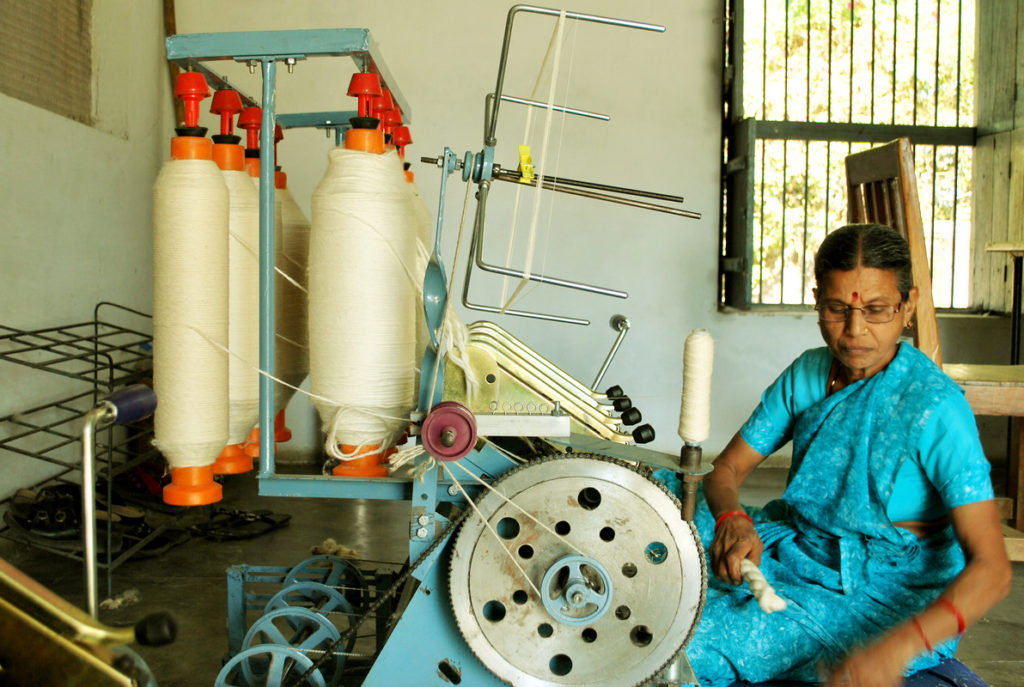
Traditional spinning in Vidharba, Maharashtra. ©Manlio Masucci
Fibres of Freedom project supports farmers to grow chemically free organic natural fibres as well as promotes indigenous skills and knowledge. It provides participating farmers with the training, infrastructure, knowledge, and leadership to help lead, through positive example, an increasing number of farmers into this and similar projects.
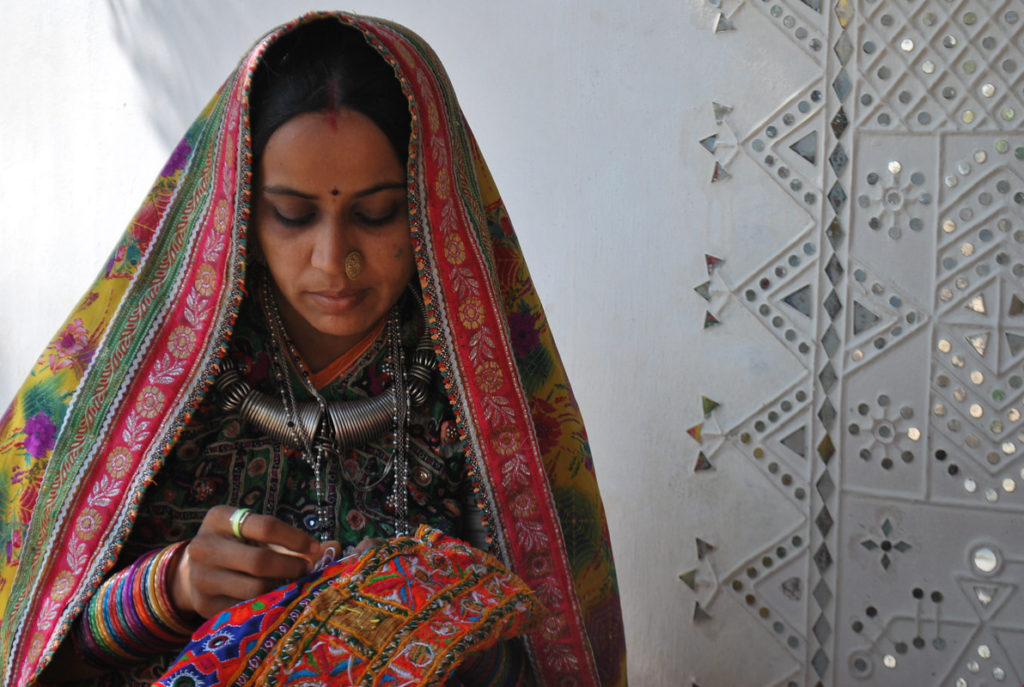
Artisanal embroidery in Gujarat. ©Manlio Masucci
The incomes that the Project will bring to these farming families will enable their children to go to school and get an education. The despair and dispossession experienced by these families and their communities will be transformed into hope and economic empowerment in a stable way.













